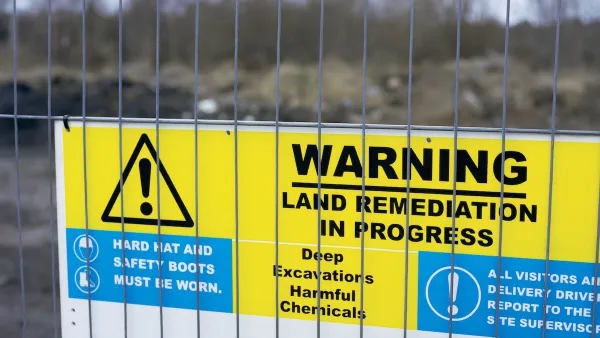David Morley, AICP, asks if growth is a necessary prerequisite for long-term community health and prosperity, and whether it might be possible to rethink "the dominant planning paradigm in the United States."
In his post, Morley examines to the profession's long tradition of growth-oriented planning, and its increasing failures: "The fundamental problem with the classic, growth-oriented planning paradigm is that it simply doesn't work for the hundreds, if not thousands, of cities in the U.S. who've suffered decades of depopulation and disinvestment due to sprawl, deindustrialization, or Sun Belt migration."
Morley bases his discussion of the failures of the growth-oriented planning model for post-industrial shrinking cities and inner-ring suburbs, and potential solutions, on a new PAS report titled Cities in Transition (PAS 568), written by Joseph Schilling and Alan Mallach, FAICP.
For cities and suburbs such as Detroit, Buffalo, Euclid, Ohio, and Orange, New Jersey, in which a growth-oriented planning and development strategy are not viable, "The key theme of Cities in Transition is that planners working in these cities need to embrace a new paradigm based on sustainability instead of growth. As Schilling and Mallach explain: 'This is not planning for shrinkage but planning that recognizes shrinkage as the reality and a starting point for thinking about the future.'"
According to Morley, "As discussed at length in Sustaining Places (PAS 567) this new planning paradigm must embrace a livable built environment, harmony with nature, intergenerational equity, community health, authentic engagement, and economic resilience."
FULL STORY: Is Growth a Prerequisite for Long-Term Community Health and Prosperity?

Planetizen Federal Action Tracker
A weekly monitor of how Trump’s orders and actions are impacting planners and planning in America.

Maui's Vacation Rental Debate Turns Ugly
Verbal attacks, misinformation campaigns and fistfights plague a high-stakes debate to convert thousands of vacation rentals into long-term housing.

San Francisco Suspends Traffic Calming Amidst Record Deaths
Citing “a challenging fiscal landscape,” the city will cease the program on the heels of 42 traffic deaths, including 24 pedestrians.

Amtrak Rolls Out New Orleans to Alabama “Mardi Gras” Train
The new service will operate morning and evening departures between Mobile and New Orleans.

The Subversive Car-Free Guide to Trump's Great American Road Trip
Car-free ways to access Chicagoland’s best tourist attractions.

San Antonio and Austin are Fusing Into one Massive Megaregion
The region spanning the two central Texas cities is growing fast, posing challenges for local infrastructure and water supplies.
Urban Design for Planners 1: Software Tools
This six-course series explores essential urban design concepts using open source software and equips planners with the tools they need to participate fully in the urban design process.
Planning for Universal Design
Learn the tools for implementing Universal Design in planning regulations.
Heyer Gruel & Associates PA
JM Goldson LLC
Custer County Colorado
City of Camden Redevelopment Agency
City of Astoria
Transportation Research & Education Center (TREC) at Portland State University
Jefferson Parish Government
Camden Redevelopment Agency
City of Claremont





























